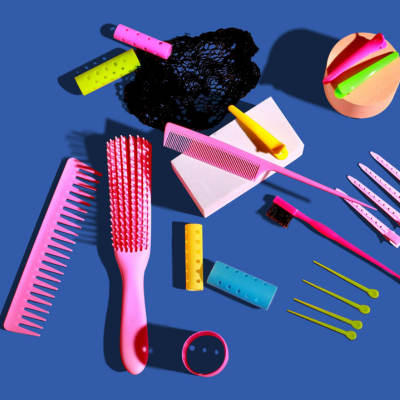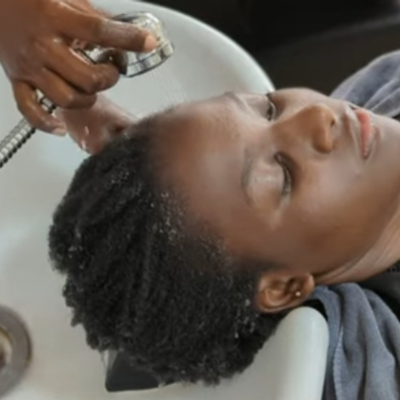- Support 24/7
- +1 (480) 468-4543
- livara@mylivara.com
What To Do After Shampooing Your Hair: Tips For Naturally Coily Hair
What is Pre-Pooing?
January 2, 2024Does Gel Cause Hair Damage?
January 4, 2024At some point, you know you have to wash your hair. Whether you have a protective style or not, keeping your curls clean is absolutely essential for healthy hair growth. Usually, after washing and rinsing hair that’s coily or afro-textured, it may not be the wisest thing to leave it to air dry and just be. It will tangle and become an unmanageable mess. Naturally coily hair textures like 4C may easily become difficult to handle if the proper steps aren’t taken after shampooing. Stick around as we delve into the necessary steps to take after washing naturally coily hair.
1. Condition
During shampooing, the hair may lose some of its moisture as the cleansing agents do their work. That’s why it’s always important to follow up shampooing with conditioner. Conditioner is a moisturizing agent made up of ingredients like silicones, oils, and emollients which work together to replenish the moisture lost during shampooing. Applying conditioner is easily the most important post-shampoo step.
There are different types of conditioner you can use post-shampoo, such as rinse-out conditioners, deep conditioners, or leave-in conditioners. Their names can easily give you an idea of what they do.
Rinse-out conditioners effectively revive moisture in the hair and aid in detangling; however, they need to be washed out. Make sure to read the directions on your conditioner product to know whether your conditioner is rinse-out or leave-in. Not rinsing out the product when it’s meant to be rinsed out may result in unwanted buildup.
Rinse-out conditioners should typically stay on for 2–5 minutes and be thoroughly rinsed out after.
Deep conditioners, on the other hand, are designed to stay in much longer. A deep conditioner is a thick, concentrated conditioner or hair mask that’s left on for usually 20–30 minutes and rinsed off or left in, depending on the nature of the given product. For example, our Livara 2in1 Sapphire Deep Conditioner and Leave-In Treatment doesn’t have to be rinsed out after use.
Deep conditioning goes beyond regular conditioning to repair and nourish the hair shaft from the inside out. It intensely moisturizes, improves overall texture and prevents breakage. A deep conditioning treatment is recommended every 1-2 weeks on clean, damp hair.
Lastly, there are also leave-in conditioners. Also known as no-rinse or leave-on conditioners, these kind of conditioners are applied to your hair after washing it or before styling and don’t need to be washed out. They soften the hair and provide long-lasting moisture after shampooing.
Rules of Applying Conditioner to Hair
- Apply conditioner to towel-dried hair. The hair shouldn’t be dripping wet or extremely dry; it should be sufficiently moist or damp.
- Section off your hair into manageable portions for effective absorption of the conditioner. Make sure to massage it through each section so that no strands are left without product.
- Spread the conditioner from your ends to the roots. NOT the scalp; conditioner is designed for your hair strands.
- Before you can rinse out the conditioner, make sure to detangle your strands.
2. Detangling
After successfully conditioning your hair according to the chosen product’s instructions, you can move on to detangling. Detangling is usually best done while the conditioner is still on your strands. Conditioner adds slip to the hair, making it much easier to remove knots and tangles. So before you can rinse out your conditioner, make sure to utilize the opportunity and detangle your strands.
As you know, we’re ditching aggressive combing and brushing for finger detangling. With the combination of your conditioner and your fingers, you’ll notice much less breakage. Always finger-detangle before using any detangling tool. By doing this, you won’t notice any tension or pressure as you comb your hair afterwards.
We recommend using detangling brushes or wide-toothed combs that won’t tug at your hair, like afropicks.
Detangle starting from your tips to your roots. This is so important for preventing breakage since you can really rip out hair when you start from the roots to the ends. Most of all, be gentle. Be gentle and patient as you detangle your hair. Remember, you are a gem. Treat your hair as such.
Once you’re done, rinse out the conditioner; if it’s a leave-in, well, leave it in. Pat the hair dry and apply a natural oil or butter like our shea butter and avocado oil-infused Emerald Hair Food. Apply to the scalp, the lengths of your hair and the ends as well (they’re the oldest parts of the hair, hence prone to breakage). Gently massage through your scalp and hair afterwards for effective coverage.
3. Style As Desired or Plait a Protective Style
There are many styles you could go for, such as a pineapple puff, or a wash-and-go. While the option of the wash-and-go style isn’t many people’s go-to, if it works for you, you shouldn’t hesitate to go for it after detangling. Apply some curl-defining cream or gel and rock your natural curls.
On the other hand, if you’re looking to combat the shrinkage that comes with washing your hair or if you just want it out of the way, plait it into a protective style. It doesn’t have to be too fancy; you could just make chunky twists or braids with your own hair. Other options include cornrows (not too tight) or flat twists.
Don’t forget to cover your hair with a satin bonnet or silk scarf to prevent moisture loss to your bedding and unnecessary friction that could result in breakage.
And that’s it! After properly shampooing and rinsing your hair, make sure to condition, detangle, and style it. Thanks for reading, we hope this was helpful! Look out for our daily hair blogs for more hair tips.



